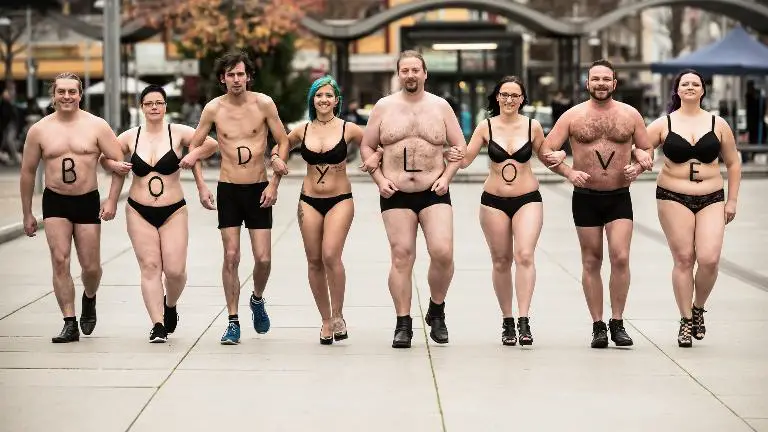The Body Positivity Movement has gained an immense amount of attention within the last few years, from model Ashley Graham making history as the first plus-sized model to grace the cover of “Sports Illustrated,” to empowering works of art on individual beauty.
But, what is the movement really, and how do you start practicing it?
On its most basic level, body positivity is the idea that every person, regardless of body type, is deserving of a positive, self-loving lifestyle. Started by Connie Sobczak and Elisabeth Scott, the movement encourages people to adapt more affirming notions and attitudes toward their bodies, with the hope of improving overall health and well-being.
Within the last few years, though, many have manipulated what once was a self-encouraging movement into a negative stereotype. Critics are quick to call it a misguided feminist movement, dismissing it without taking the time to learn about its true essence.
Many assume that the movement is geared solely toward plus-sized women (which can be a stupid term), while shaming other body types. IT IS THE EXACT OPPOSITE. The Body Positivity Movement is meant to encourage everyone, regardless of religion, gender, sexual orientation, race, age, weight or disability, to love and appreciate their bodies.
The movement isn’t strictly for women either. Unfortunately, too many assume that men do not suffer from body issues the same way that women do, which is false. Men are faced with the same stereotypes of the “ideal” body in media.

They’re continuously compared to muscular, tall actors, who, for lack of a better word, make women swoon. These stereotypes undoubtedly lead to insecurities and discontent for the body type they already have. Men should never be excluded from the movement, as they deserve to love and appreciate their bodies just as women do.
Another misconception is that the Body Positivity Movement is an excuse to disregard health issues. So many people complain about the movement because they say that it’s an excuse for bigger individuals to continue an unhealthy lifestyle. It’s NOT.
The movement has nothing to do with health. Of course, it’s true that people who are bigger in size generally have more health issues, but having health issues doesn’t mean that you can’t feel or embrace the idea of self-love.
Mainstream media often focuses on one body type for both men and women. And honestly, when people think about celebrities with the “best bodies,” they often think of people like Jennifer Aniston or Ryan Reynolds.
But, what about people of color, the LGBTQ+ community and those with disabilities? A large portion of the population is left out of the media, and it makes the average person, who is perfectly beautiful, feel less worthy.
Not everyone has access to organic food, personal trainers and Photoshop, which is exactly what you need to look like the “ideal” body type that you’re bombarded with every day. Why strive for a certain type of beauty when the person on your magazine doesn’t truly look like that?
The media leaves everyone with one hell of a warped sense of beauty. You’re told what you should look like, what being attractive means and that if you’re not part of this extremely small category, you shouldn’t be content with yourself.
How about no? It’s time to start reclaiming individual beauty.
The Be Body Positive Model, created by the Body Positivity Movement, provides people with a wholesome, non-shaming approach to life, stating: “When we become proficient—competent—at using these skills, we are able to care for ourselves from a place of self-love and appreciation, which allows us to act on our purpose and life goals.”
The first of these goals is to reclaim your health. Essentially, you want to adopt a health-centered relationship with your body, as opposed to solely focusing on numbers and weight. When you do this, you’re able to gain authority over your body, separating the myths of health and identity from reality.
After reclaiming your health, you should practice intuitive self-care. To accomplish this goal, learn how to listen and respond to your body’s needs. Acquiring the right resources and tools to live a healthy lifestyle is essential in beginning your journey toward body acceptance. Everyone is different, which means everyone’s journey is going to be different. Don’t follow one standard of daily life; create your own.

Third, you should cultivate self-love. To gain confidence and start making body-affirming decisions, you need to leave behind the self-criticism that previously ruled your life. Start accepting yourself for everything that you are and everything that you aren’t. Self-love is essential in becoming self-accepting.
Goal number four is to declare your own authentic beauty. This step is one of the most difficult, but it’s also one of the most important. In order to fully accept yourself for who you are, you must recognize the individuality that makes you special.
Don’t compare yourself to the women and men that you see on TV, because that will only end in disaster. Expand your way of thinking to accept all forms of beauty, even those that don’t directly correlate to you.
Lastly, you should build community. Connecting with others who share the same positive thinking and approach to life makes accomplishing your goals so much easier. Find people who you look up to and see as a positive impact on your life. Building up a solid group of individuals and role models, who share the same values of body positivity and acceptance as you do, only encourages your journey.
The Body Positivity Movement hopes to create “a world in which people are liberated from self-hatred, value their beauty and identity and use their energy and intellect to make positive changes in their own lives and in their communities.”
While I love this movement and everything it stands for, I would be crazy not to recognize the faults that it has. But, the importance of the movement isn’t in its perfection; it’s in the ability to get the conversation started.


















[…] Read the full article from the Source… […]
[…] term Body Positivity and its movement is defined by Payton Ramey, University of Central Florida on Study Break […]
[…] term Body Positivity and its movement is defined by Payton Ramey, University of Central Florida on Study Break […]
[…] The term Body Positivity and its movement is defined by Payton Ramey (University of Central Florida) on Study Break as: […]
[…] Source: https://studybreaks.com/culture/body/ […]
[…] is overall entertaining, memorable and effective. Annie might not fit the body standards set by society, but that’s because she prioritizes more important things. The message of how […]
[…] The term Body Positivity and its movement is defined by Payton Ramey (University of Central Florida) on Study Break as: […]
[…] source […]